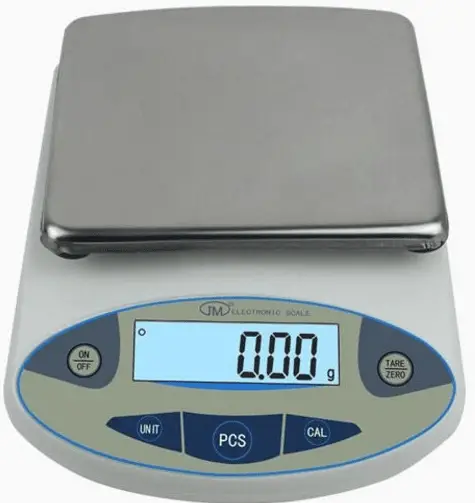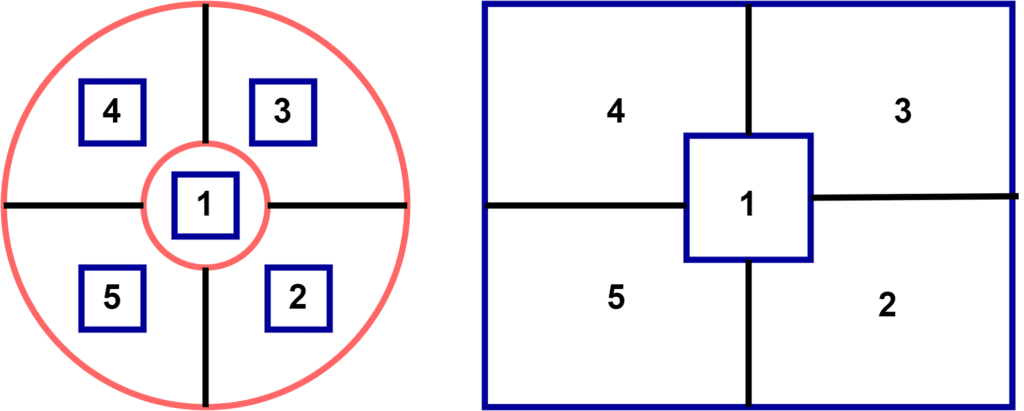In this article, we will discuss the calibration procedure of weighing balance and the precautions while weighing for correct measurement.
Calibration of each and every Instrument is necessary at regular intervals. The calibration is done to ensure that the Instrument is working properly and that the purpose for which the Instrument is installed, is being done properly.
Calibration of Weighing Balance is very important. The reason for calibrating a weighing balance is that the weighing balance is used for weighing a material that is either supplied to another section or is being received from another section. So, a calibrated weighing balance will help to know the exact amount of the material by weighing it.

There are three main parts for the Calibration of a Weighing Balance.
- Repeatability
- Linearity
- Eccentricity
A few important points should be taken care of before starting the calibration process of the weighing balance. Below mentioned points should be followed to get accurate calibration results:
- The weighing balance should be calibrated at a place where the weighing balance is actually used. The reason for this is that at different places, the value of g (acceleration due to gravity factor) is different.
- The weighing balance should be kept on a properly leveled surface
- The surrounding environment should be the same as the surrounding environment when the weighing balance is in actual use. The temperature should also be the same during the calibration procedure.
- Specific accuracy of the weights being used to calibrate the weighing balance is needed. This factor will define the accuracy of the weighing balance.
Procedure for Calibration of Weighing Balance
1. Repeatability
Repeatability in simple terms is checking the response of the weighing balance multiple times under identical environmental conditions. A repeatability test for the weighing balance is done to ensure that the weighing balance will work properly every time.
The repeatability test is divided into two parts. One is Full Load Repeatability and Half Load Repeatability.
Steps for repeatability calibration
- Place the weighing balance on the location and turn it ON.
- Ensure that the weighing balance is showing 0. If the weighing balance is not showing 0, then press the 0 button.
- Now, according to the type of test (Half Load Repeatability or Full Load Repeatability), place the weight on the weighing balance. Note down the reading shown on the display.
- Remove the weight and after a few seconds, place the same weight again. Do not press the ‘0’ button even if the weighing balance is showing some value.
- Repeat these steps at least 10 times and find the standard deviation.
2. Linearity
Linearity is the test on certain intervals of an instrument on which the input vs output graph should be linear. For checking the linearity of the weighing balance, a minimum of 10-12 different weights are needed. Like if the range is 2 kg, then 0.2 kg, 0.4 kg, 0.6 kg, 0.8 kg, 1 kg, 1.2 kg, 1.4 kg, 1.6 kg, 1.8 kg and 2 kg weights will be needed.
Steps to check linearity
- First, check the zero of the weighing balance. If zero is disturbed, then press the zero button.
- Now place one weight and note down the reading.
- Similarly keeps on increasing the weights and noting down all the values.
- Now take the average of each weight reading.
- For a weighing balance, linearity is given by
- Linearity = Standard Reading – Weighing Balance Reading.
For example, if the standard weight is 500 grams and the weighing balance indicates 502 grams, then Linearity = 500 – 502 = – 2 gram
3. Eccentricity
Ideally, all the weights on the weighing balance should be placed in the middle or center of the weighing balance. But practically, this is not possible every time. The error due to the weights placed off the center is termed an Eccentricity error.
For Eccentricity, recommended load is in between or equal to the one-third and a half of the maximum capacity of the weighing balance.
For Eccentricity, the position of the weight on the weighing pan should be one-half (1/2) to three fourth (3/4) of the total distance.

Steps to check Eccentricity
- Choose the weight between one-half (1/2) to one-third (1/3) weight of the full load. Place the weight on the center position 1 as shown in the figure. Note down the reading.
- Now place the weight at positions 2, 3, 4, and 5 one by one and note down the readings.
- Subtract the readings from the center reading i.e. reading obtained by placing the weight on position 1. (position 2 – position 1 weight, position 3 – position 1 weight, position 4 – position 1 weight, and position 5 – position 1 weight)
- The maximum difference is the Eccentricity of the weighing balance.
Alternate Method
- Place the weight on position 1 shown in the figure.
- Press the Zero button.
- Now one by one place weight on the 2, 3, 4, and 5 positions. Note down all the readings.
- The maximum value obtained is the Eccentricity of the weighing balance.
Common Mistakes while Calibration of the Weighing balance.
- In the Linearity test, the test is to be done 3-4 times in such a way that first places weight number 1, then weight number 2, and so on. Do not place weight 1 3-4 times and note down the reading.
- The correct way to take different readings is by increasing and decreasing weights. Randomly placing weight will not give good results. Also, the average of all the readings which are taken 3-4 times should be preferred.
- In Eccentricity, always choose the weight between 1/2 to 1/3 of the maximum range of the weighing balance.